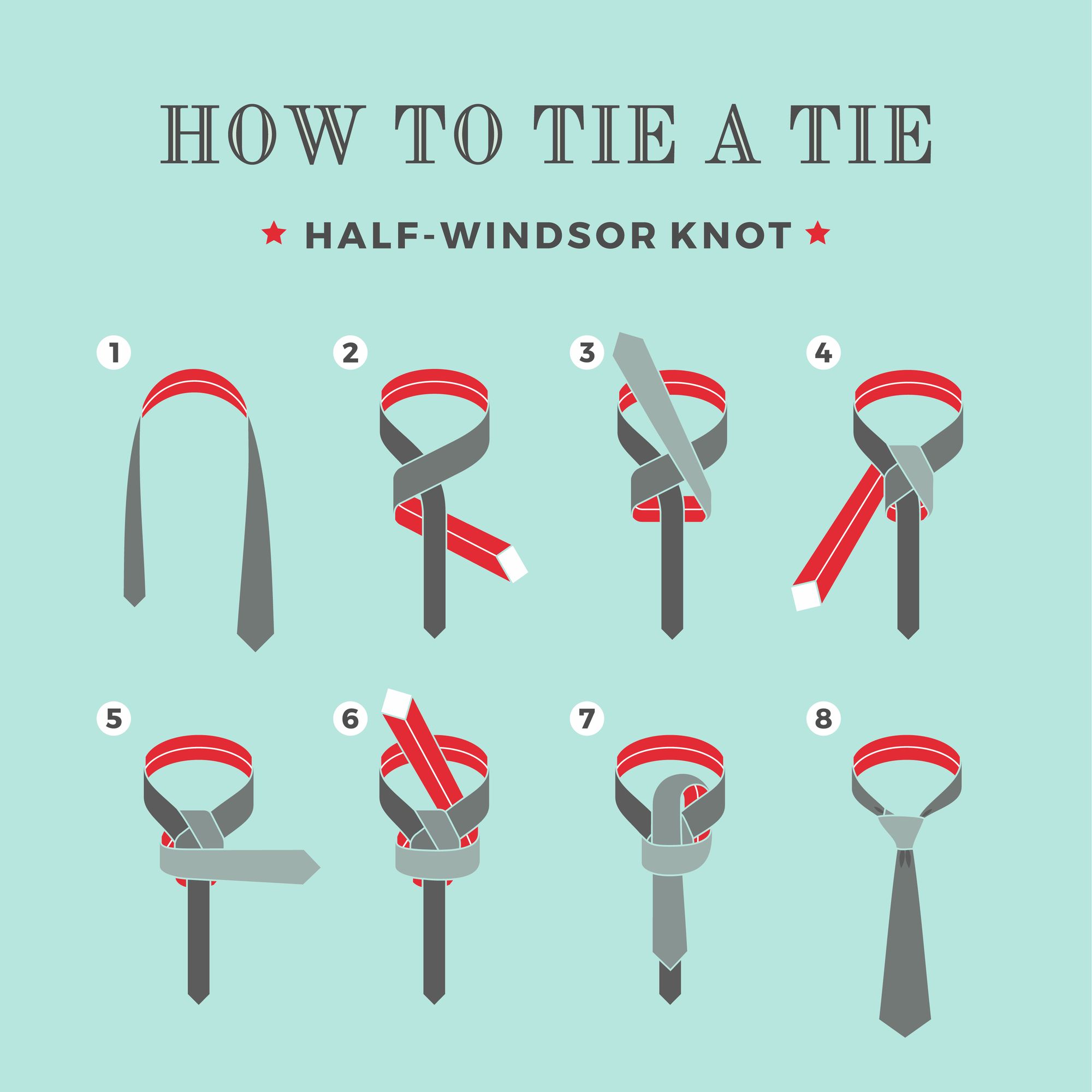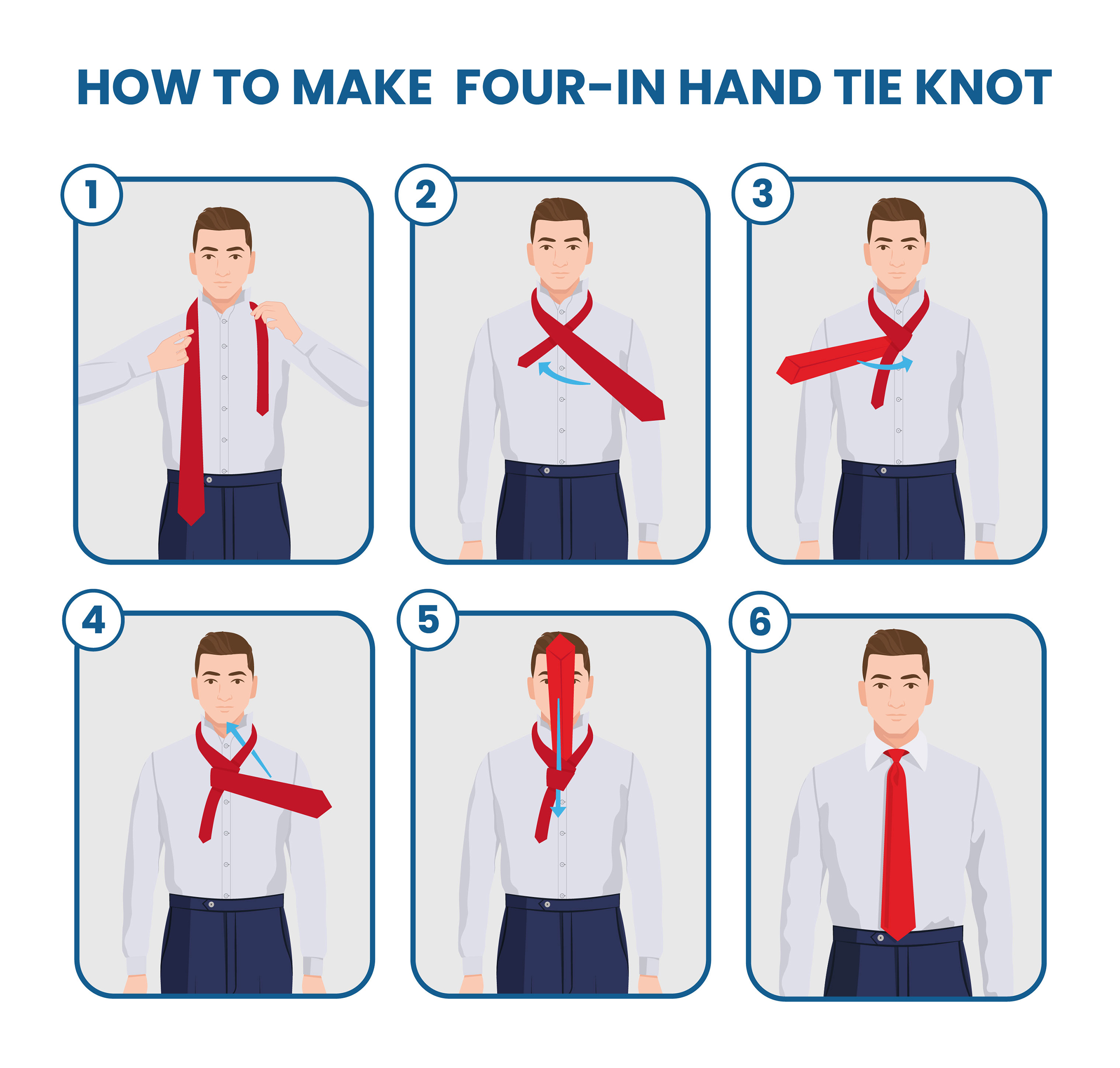Mastering The Art: Your Ultimate Guide To Tying A Tie
Tying a tie might seem like a daunting task, a secret handshake reserved for the sartorially inclined. But what if we told you that mastering this essential skill doesn't have to be complicated? Far from it! Whether you're preparing for a wedding, a crucial job interview, or simply aiming to elevate your everyday style, knowing how to tie a tie like a pro is an invaluable asset. This comprehensive guide will walk you through various knots, offer step-by-step instructions, and provide expert tips to ensure you always look your best.
Why Mastering Tie Knots Matters
In the professional world, at formal events, or even during celebratory occasions, a well-tied tie speaks volumes. It signifies attention to detail, professionalism, and a polished appearance. As the data suggests, knowing how to tie a tie is "essential for professional" settings and can significantly enhance your overall look. But it's not just about looking good; it's about confidence. When you know you've got your knot perfectly cinched, you carry yourself with an extra degree of poise.
The beauty of tie tying lies in its versatility. There isn't just one way to tie a tie; there are several ways, each offering a distinct aesthetic and suiting different contexts. From the classic and simple to the adventurous and intricate, choosing the right knot can truly make or break your ensemble. This guide aims to simplify the process, showing you that tying a tie "doesn't have to be complicated!"
Essential Tie Knots for Every Occasion
Let's dive into the most popular and versatile tie knots you should know. We'll provide a brief overview of each, along with insights into when and why to use them. Remember, "learn how to tie a tie with step-by-step tutorials" is the key, and practice makes perfect!
The Four-in-Hand Knot: The Everyday Essential
Often hailed as "the best way to tie a tie for beginners," the Four-in-Hand is a simple, slender, and slightly asymmetrical knot. It's incredibly versatile and perfect for a wide range of shirt collars, especially those with narrower openings. Its ease of tying makes it a go-to for daily wear and less formal occasions.
Why it's great:
- It's one of the easiest knots to learn.
- It's suitable for most tie fabrics and thicknesses.
- Its casual elegance makes it perfect for everyday office wear or semi-formal gatherings.
When to use: Daily wear, business casual, standard collar shirts.
The Half Windsor Knot: Balanced Elegance
The Half Windsor offers a more substantial and symmetrical look than the Four-in-Hand, without being as bulky as the Full Windsor. It strikes a perfect balance, making it a highly adaptable knot for various occasions and shirt collars. It's a great step up once you've mastered the Four-in-Hand.
Why it's great:
- More formal than the Four-in-Hand, but less imposing than the Full Windsor.
- Works well with medium-spread collars.
- Offers a neat, triangular shape.
When to use: Business meetings, dinners, formal events where a full Windsor might be too much.
The Full Windsor Knot: The Power Statement
The Full Windsor is the grand duke of tie knots. It's a large, thick, and perfectly symmetrical knot that exudes confidence and formality. It requires more tie length than other knots, making it ideal for thinner ties or for those who prefer a bold statement. The data refers to it as "the easiest way to tie a tie is to go with a simple Windsor Knot, likely the one that comes to mind when you think of the word 'tie'." While it might be the most recognizable, its complexity makes it a slightly more advanced beginner knot than the Four-in-Hand.
Why it's great:
- Highly formal and commanding.
- Perfectly symmetrical, creating a polished look.
- Ideal for wide-spread or cutaway collars.
When to use: Weddings, job interviews, formal business settings, or any occasion where you want to make a strong impression.
Beyond the Basics: Adventurous & Unique Knots
For those who have mastered the classics and wish to explore further, there are knots like the Eldredge and Trinity. These are far more intricate and visually striking, transforming your tie into a piece of art. While not for everyday wear, they are fantastic for special occasions where you want to showcase your unique style. And let's not forget the Bow Tie – a timeless classic for black-tie events, which has its own unique tying method: "to tie a bowtie, start by draping it around your neck with one end slightly longer than the other. Cross the longer end over, loop it through the middle, then..."
Choosing the Right Knot: Tips for a Polished Look
Tying the knot is only half the battle; knowing which knot to choose is the other. As the data emphasizes, "certain necktie knots should be used with certain shirt collars and tie fabric materials to get the best results for your appearance." Here are some crucial tips:
Matching Your Knot to Your Collar
- Narrow/Point Collars: The Four-in-Hand is your best friend. Its slender profile won't overcrowd the collar.
- Medium Spread Collars: The Half Windsor offers a balanced look, filling the space without being too wide.
- Wide Spread/Cutaway Collars: The Full Windsor is perfect here, as its substantial size beautifully complements the wider collar opening.
Considering Your Face Shape and Body Type
Believe it or not, your knot can also complement your physical features. "Find out which knot suits your collar, face shape, and body."
- Smaller Faces/Builds: Opt for smaller knots like the Four-in-Hand or Half Windsor to maintain proportion.
- Larger Faces/Builds: A Full Windsor can balance out a larger frame or face, providing a more harmonious look.
Tie Fabric and Thickness
The material and thickness of your tie significantly impact the final knot. A thick wool tie will produce a much larger knot than a thin silk tie, even with the same tying method.
- Thick Ties: Stick to simpler, smaller knots like the Four-in-Hand or Half Windsor to avoid an overly bulky appearance.
- Thin Ties: These can handle the larger Full Windsor, which will give them more presence.
Occasion Matters
Your choice of knot should also align with the formality of the event. "Learn how to tie a tie for a wedding or any occasion."
- Formal Events (Weddings, Galas): The Full Windsor or Half Windsor are excellent choices for their refined appearance.
- Business Professional: The Half Windsor or a neat Four-in-Hand are generally appropriate.
- Casual/Everyday: The Four-in-Hand is the most relaxed and versatile option.
Mastering the Art: General Tips & Tricks
Learning how to tie a tie is a skill that improves with practice. Here are some general tips to help you on your journey to becoming a tie-tying expert:
- Practice in Front of a Mirror: Many tutorials, including those with "animations... presented as though the wearer were seeing his own reflection," are designed for this perspective. This helps you visualize the steps accurately.
- Start with the Right Length: The wider end of your tie should typically hang lower than the narrow end before you start tying. The exact difference depends on the knot and your height.
- Aim for the Dimple: A small indentation just below the knot (the "dimple") is a sign of a well-tied tie. It adds character and depth. You can create it by gently pinching the tie just below the knot as you tighten it.
- Adjust for Perfection: Don't be afraid to adjust the knot and the length of the tie after it's tied. The goal is for the tip of your tie to barely touch the top of your belt buckle.
- Utilize Visual Aids: As the data suggests, "see visual comparisons, tips and tricks for choosing the right" knot. Online "pictures and video tutorials" are invaluable resources. "This video shows how to tie a tie so the knot is appropriate for any occasion, from work to a wedding."
Conclusion
Tying a tie is more than just a functional task; it's an expression of personal style and an essential skill for any modern wardrobe. By understanding the nuances of different knots – from the "classic Windsor and Four-in-Hand to the adventurous Eldredge and Trinity" – and learning "how to tie a tie with step-by-step tutorials," you unlock a new level of sartorial confidence. Remember, "tying a tie doesn’t have to be complicated!" With a little practice and the right guidance, you'll be able to choose the perfect knot for any collar, occasion, or personal preference, ensuring you always present a polished and professional image.
So, go ahead, pick up a tie, and start practicing. Whether you're aiming for the simple elegance of the Four-in-Hand or the commanding presence of the Full Windsor, you now have the knowledge to master the art of tie tying. You'll soon find yourself tying a tie "like a pro," ready for any event that comes your way.
Final Summary: This comprehensive guide details how to tie various necktie knots, including the Four-in-Hand, Half Windsor, and Full Windsor, along with mentions of more adventurous knots like the Eldredge and Trinity, and the Bow Tie. It emphasizes the importance of choosing the right knot based on shirt collar type, tie fabric, face shape, body type, and occasion. The article provides practical tips for mastering tie-tying, highlighting the value of step-by-step tutorials and practice to achieve a polished, professional look for any event, from weddings to business meetings.

How To Tie A Tie Knot - 18 Different Ways of Tying Necktie Knots

How To Tie a Tie: 7 Knots to Know

How to Tie a Tie Knot: 8 Best Necktie Knots for Any Occasion